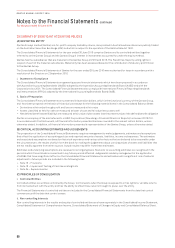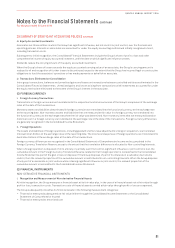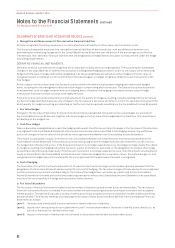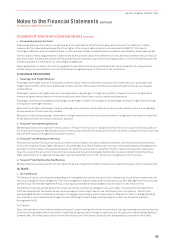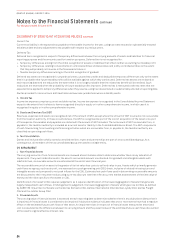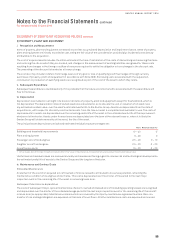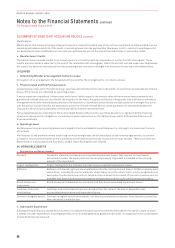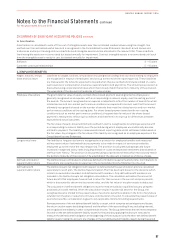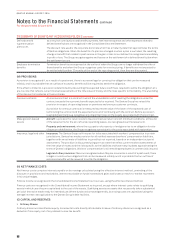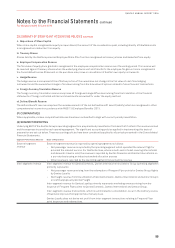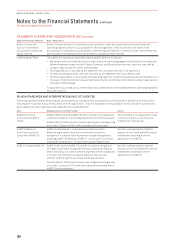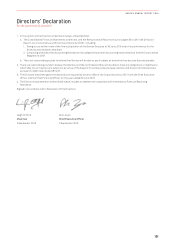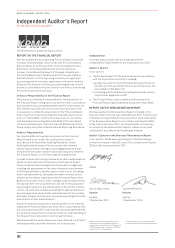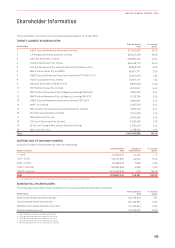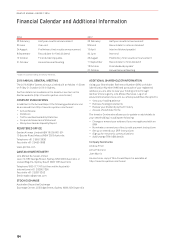Qantas 2016 Annual Report Download - page 102
Download and view the complete annual report
Please find page 102 of the 2016 Qantas annual report below. You can navigate through the pages in the report by either clicking on the pages listed below, or by using the keyword search tool below to find specific information within the annual report.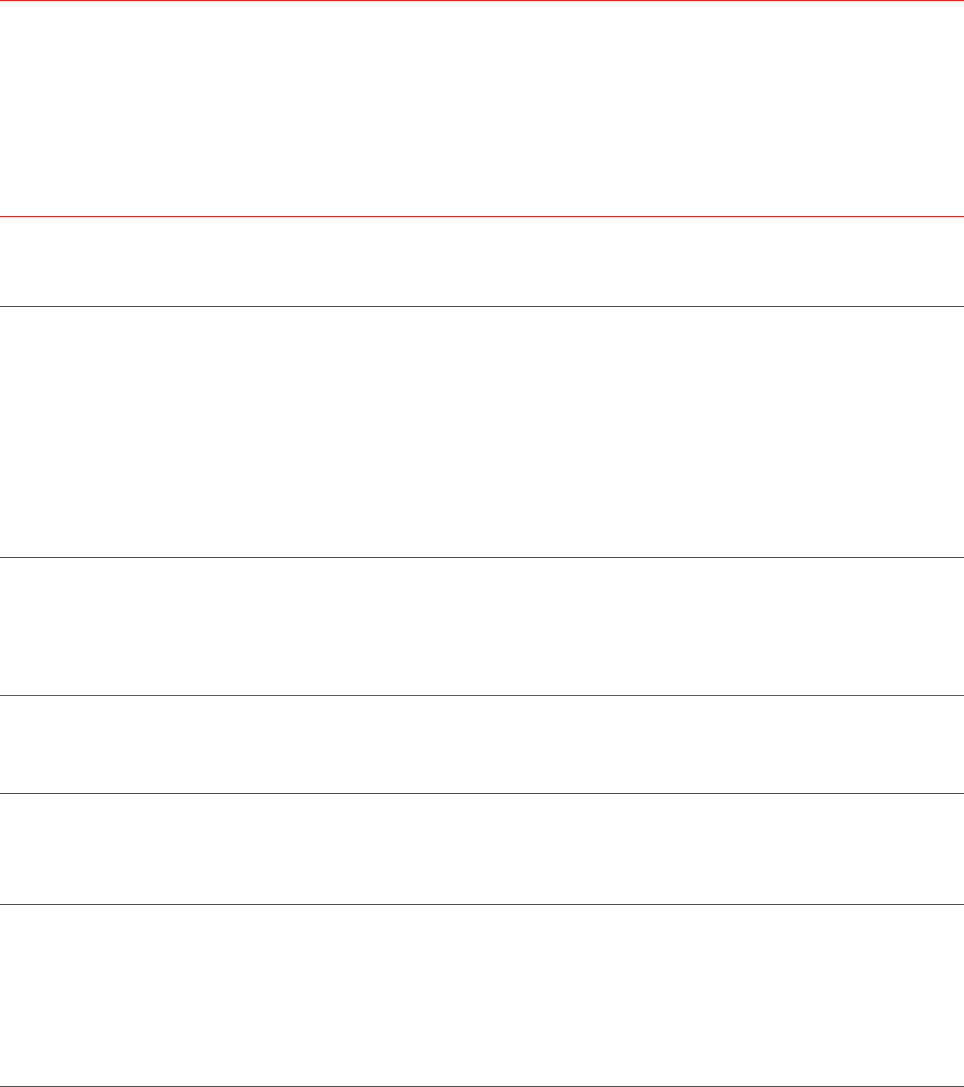
Notes to the Financial Statements continued
For the year ended 30 June 2016
Segment Performance Measure Basis of Preparation
Share of net profit/
(loss) of investments
accounted for under the
equity method
Share of net profit/(loss) of investments accounted for under the equity method is reported by the
operating segment which is accountable for the management of the investment. The share of net
profit/(loss) of investments accounted for under the equity method for Qantas Airlines’ investments has
been equally shared between Qantas Domestic and Qantas International.
Underlying EBITDAR The significant expenses impacting Underlying EBITDAR are as follows:
–Manpower and staff related costs are reported by the operating segment that utilises the manpower.
Where manpower supports both Qantas Domestic and Qantas International, costs are reported by
using an appropriate allocation methodology
–Fuel expenditure is reported by the segment that consumes the fuel in its operations
–Aircraft operating variable costs are reported by the segment that incurs these costs
–All other expenditure is reported by the operating segment to which they are directly attributable or, in
the case of Qantas Airlines, between Qantas Domestic and Qantas International using an appropriate
allocation methodology
To apply this accounting policy, where necessary, expenditure is recharged between operating segments
as a cost recovery.
(R) NEW STANDARDS AND INTERPRETATIONS NOT YET ADOPTED
The following table details the standards, amendments to standards and interpretations that have been identified as those which
may impact the Qantas Group in the period of initial application. They are available for early adoption at 30 June 2016, but have not
been applied in preparing these Consolidated Financial Statements.
Topic Key Requirements and Effective Date Impact
AASB 9
Financial
Instruments
(AASB 9
(2014))
AASB 9 (2014) amends AASB 9 (2013) to include a new expected
credit loss model for calculating impairment on financial assets.
AASB 9 (2014) is effective for annual reporting periods beginning
on or after 1 January 2018, with early adoption permitted.
This standard is not expected to have
a material impact on the financial
statements of the Group.
AASB 15
Revenue
from Contracts with
Customers
(AASB 15)
AA
SB 15 establishes a comprehensive framework for
determining whether, how much and when revenue is
recognised. It replaces existing revenue recognition guidance,
including AASB 118
Revenue
, A ASB 111
Construction Contracts
and AASB Interpretation 13
Customer Loyalty Programmes
.
Qantas is assessing the potential
impact on the Consolidated Financial
Statements resulting from the
application of AASB 15.
A
ASB 16
Leases
(A ASB 16)
AASB 16 will replace AASB 117
Leases
. It requires recognition
of a right of use asset along with the associated lease liability
where the Group is a lessee. Interest expense will be recognised
in the income statement using the effective interest rate
method, and the right of use asset will be depreciated.
The standard is effective for annual reporting periods beginning
on or after 1 January 2019, with early adoption permitted where
AASB 15 is also adopted.
Qantas is assessing the potential
impact on the Consolidated Financial
Statements resulting from the
application of AASB 16.
29 SUMMARY OF SIGNIFICANT ACCOUNTING POLICIES CONTINUED
100
QANTAS ANNUAL REPORT 2016


